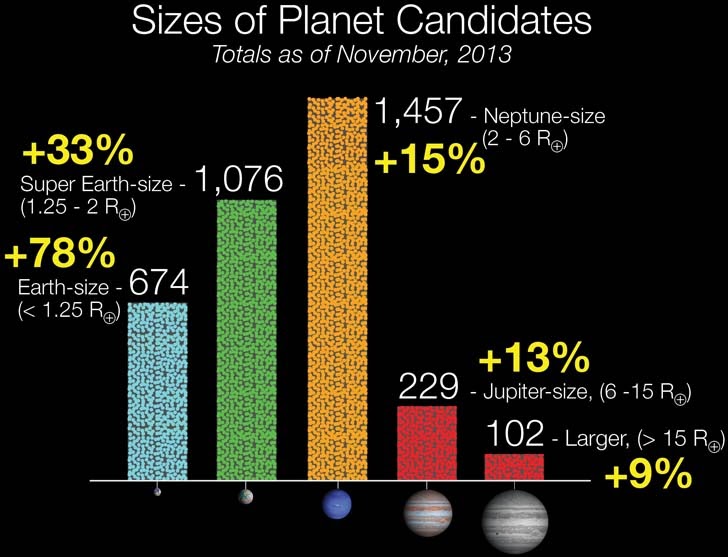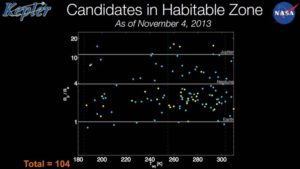NASA Kepler Mission Findings
During the first Kepler Science Conference, Kepler team announced Kepler – 22b. It is the first planet to be discovered in a habitable zone. Later, four habitable planets have been discovered. Out of those, two planets were found to be in a single system.
From the beginning to till now, 3538 planets have been discovered. Results show that most stars in our galaxy have at least one planet and smaller planets are more common.
Kepler data suggests that one in five starts like the sun is home to a planet up to twice the size of Earth orbiting in a temperate environment. This suggests that majority of stars in the night sky may be home to planetary systems like our own solar system.
Kepler data is also useful to asteroseismology. It is the study of internal structure of pulsating stars by interpreting their frequency spectra. Researchers examine sound waves generated by boiling motion beneath the surface of the star in a similar way geologists use seismic waves generated by earthquakes to probe the interior structure of Earth.

